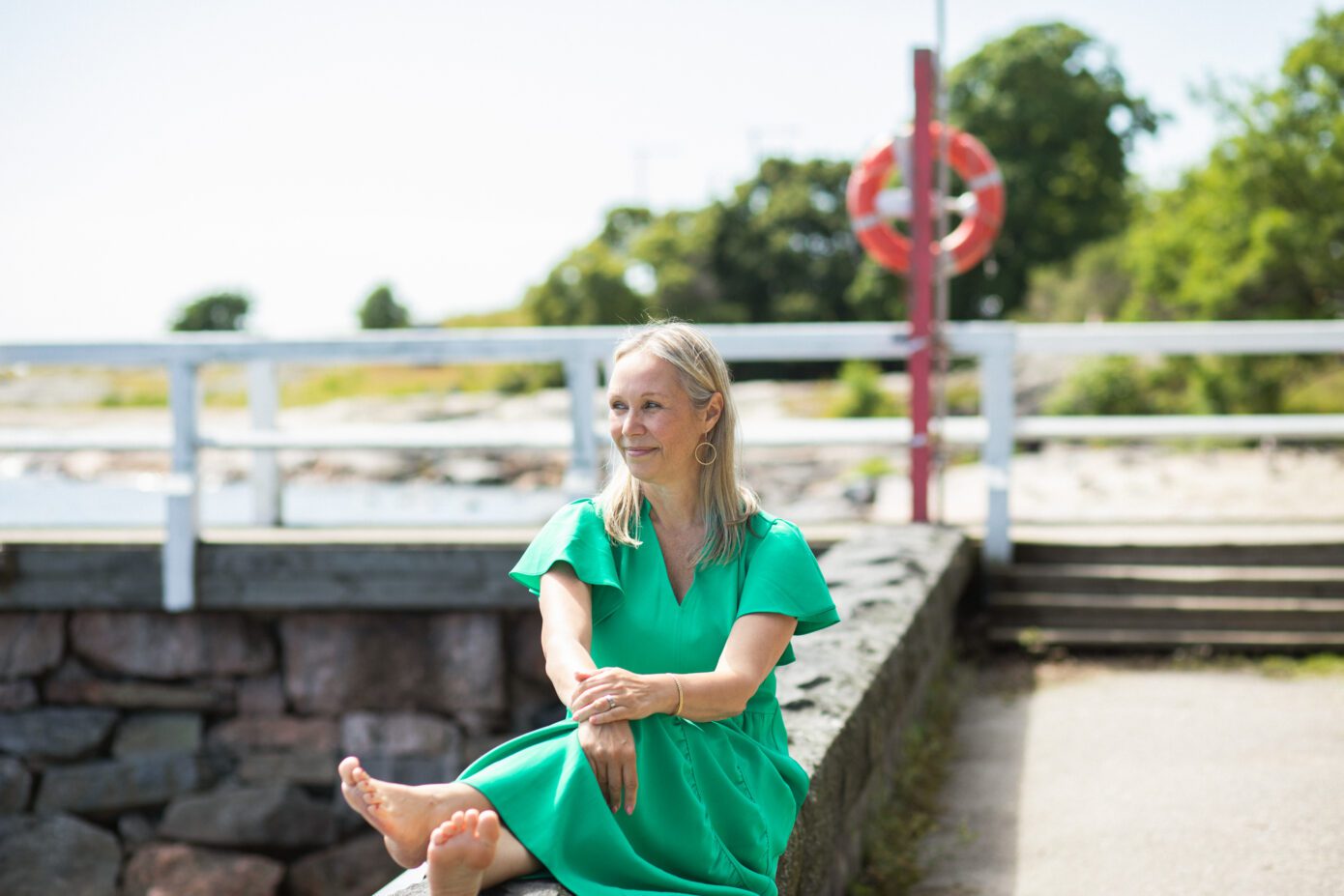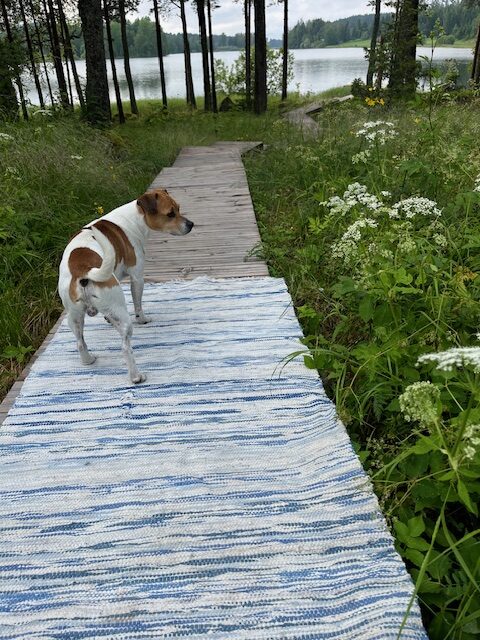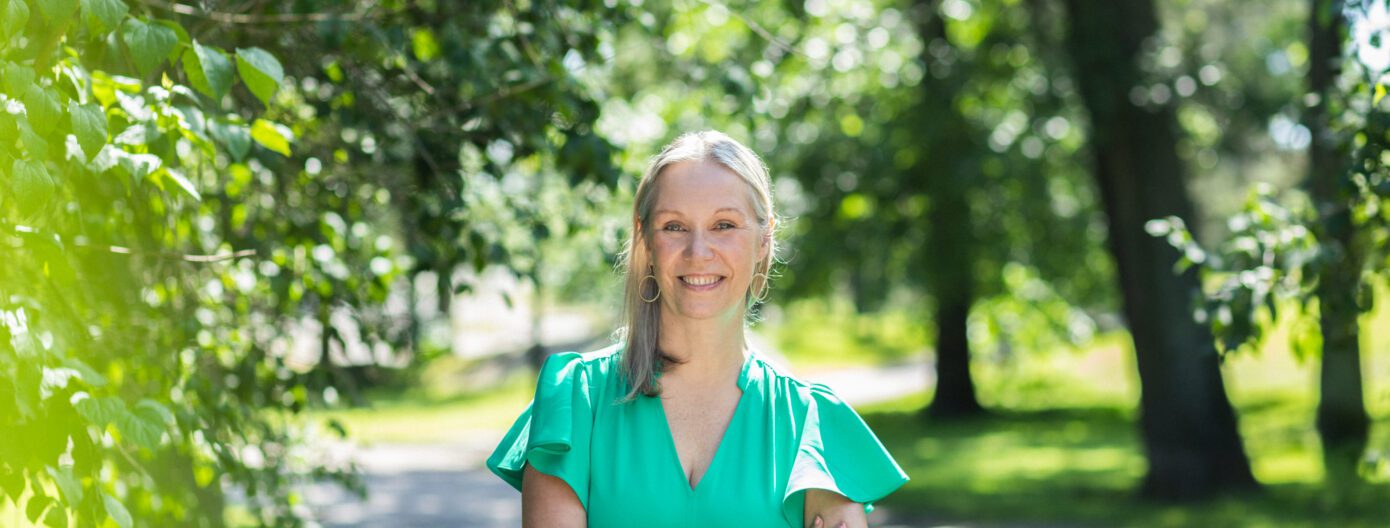The Nessling Foundation’s Board welcomed two new members this year: Kati Ihamäki and Teppo Säkkinen, both of whom bring a strong business perspective to the Board. In this article, we introduce Kati Ihamäki, whose career has been consistently guided by a focus on corporate responsibility.
Kati Ihamäki, who are you and where do you come from?
I’m the Vice President in Sustainability and Public Affairs at Fiskars Group, originally from Helsinki. My life is very much divided between two worlds: everyday city life and the peace of nature at my cottage in the Tampere region, where I spend time whenever I can.
Previously, I’ve worked at Finnair and OP Financial Group, and I’ve been involved in the boards of various organisations and foundations, such as the Children and Youth Foundation and Plan Finland. Currently, I also serve as Chair of the Board at The Association for Finnish Work, promoting Finnish work and expertise.
Corporate responsibility has been a constant thread throughout my career, from business studies to environmental management and macroeconomics, and ultimately into practical sustainability work.
What originally sparked your interest in sustainability?
It began in Nicaragua, where I spent time in the late 1990s and witnessed firsthand the impacts of poverty and inequality on people and the environment. That experience ignited a deep desire to make a difference, not just in the business world, but across society. It set me on an educational path that included environmental sciences, limnology, and development cooperation. I realized that understanding the world from many perspectives requires a broad range of expertise.
How does your background relate to the key themes of the Nessling Foundation?
From the perspective of sustainability transformation, I consider both ecological and social sustainability equally important. But to be clear: without a sound ecological foundation, no other form of sustainability can exist. I’m especially concerned about biodiversity loss, something that becomes visibly apparent when you observe the same landscape year after year, even from a cottage pier.
At Fiskars Group, we’ve made the circular economy our key metric and goal for sustainability. Circularity is a powerful lever as it touches on resource use, biodiversity, soil, and water systems. For many businesses, biodiversity loss may feel distant, but when it’s connected to the availability of raw materials and production methods, the relevance becomes clear.
How do you see the role of companies in the sustainability transformation?
The transformation cannot be achieved by governments or the third sector alone – businesses play a crucial role. Companies need a seat at the table, but they also need deep, research-based knowledge to inform their decisions. That’s why foundations like the Nessling Foundation play a vital role as bridge-builders between science and the business sector.
I wish companies made more use of research data, instead of relying solely on consultant reports. At the same time, researchers should feel encouraged to approach businesses and explain how their work can support the corporate world and enrich decision-making. We need to break down silos and find a common language – only then can the sustainability transformation become reality.

What is the role of foundations, especially the Nessling Foundation?
Foundations are irreplaceable in enabling research, particularly now that public research funding is under pressure. The Nessling Foundation’s particular strength lies not only in funding, but in amplifying the voices of researchers and the impact of their work. That’s exactly what’s needed now.
Foundations also have a role as societal discussion partners. Science and research-based knowledge need defenders – but also interpreters and practitioners.
How do you view the composition of the current Board and your own role in it?
I feel that I bring the business perspective to the Board, complementing the expertise of others. I don’t see myself solely as a “contributor,” but also as a “learner” – I want to absorb as much as I can from the other Board members, the researchers, and the entire Nessling Foundation community. I believe a diverse Board, bringing together expertise from different fields of life, is the best possible support for the Foundation’s work.
What message would you give to researchers considering applying for funding from the Nessling Foundation?
Absolutely apply. If you believe in your research and its importance, you can convince others as well. A good application is already a small victory for the cause you’re researching. And now, as many other funding sources are tightening, foundation funding is more valuable than ever – both materially and symbolically.
What is one concrete action each of us can take toward a more sustainable future?
Consume less and more wisely. Think about what you really need. Repair, maintain, and use things for a long time. At our cottage, we have blue-and-white rag rugs on the floor, and I remember once my mother said: “Do you know where that blue came from?” It was from her midwife school dress from the early 1960s.

Photos: Annukka Pakarinen

